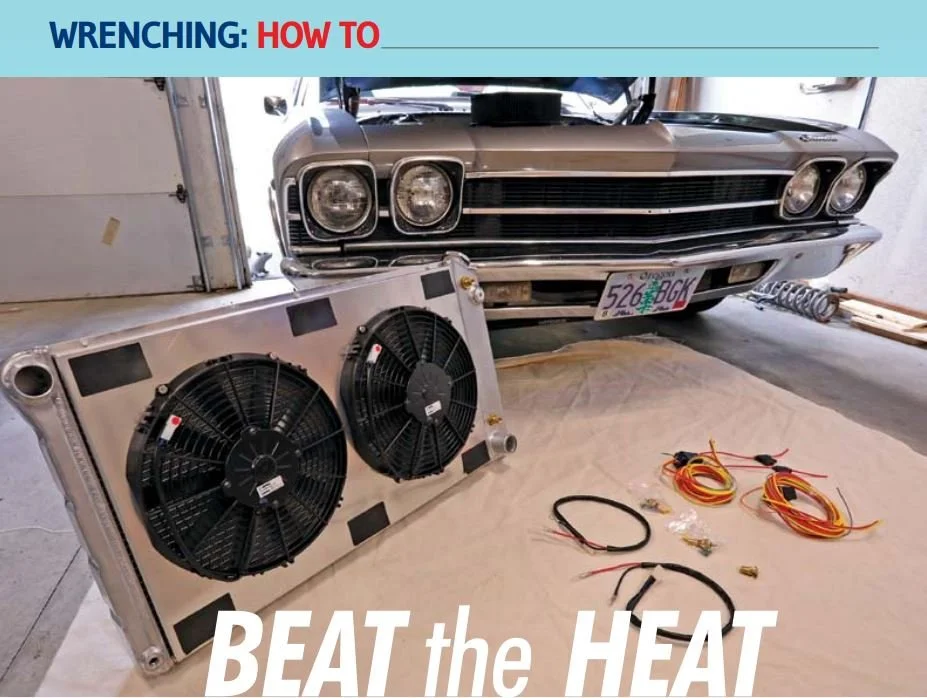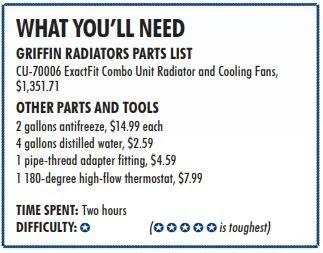It’s a hot summer day, and you’ve brought out your classic muscle car for a trip to your local afternoon car show. But traffic is slow, and you’re sitting in it, watching that temp gauge climb higher and higher as you weave your way closer to the event. Inside the car, your wife and kids sweat as the car radiates heat from the floorboards. Sound like fun? Not really.
Wouldn’t it be nice to never have to worry about controlling your engine’s heat in traffic or otherwise? Summer’s right around the corner, so the time is now for a radiator upgrade.
In the 1960s, brass/copper radiators were the industry standard, typically offered in three- or four-row configurations in most V8 cars and trucks. They worked well enough when being force-fed air from moving down the road, but today’s technology — including electric fans in place of a mechanical belt-driven fan — is much better at dissipating heat than the OE unit in your Mustang, Camaro or ’Cuda. This is especially true when you’re not moving — such as when you’re sitting in modern traffic on a summer afternoon.
Companies such as Griffin have staked a reputation on making the best American-built aluminum radiators on the market today. What’s more, they offer an ExactFit line, which will bolt in place of your factory unit, use the same-style hoses and fittings, and provide a serious boost in cooling power over your old brass/copper unit.
ACC Columnist Jay Harden was facing this very problem with his 1969 Chevelle — it’s a big-block car that was still fitted with its factory three-row brass/ copper radiator, which was having a hard time controlling heat from his 454 big block. We went to Griffin Radiator and ordered one of their ExactFit units to show how to upgrade a classic muscle car with modern cooling power. Here’s how we did it.

